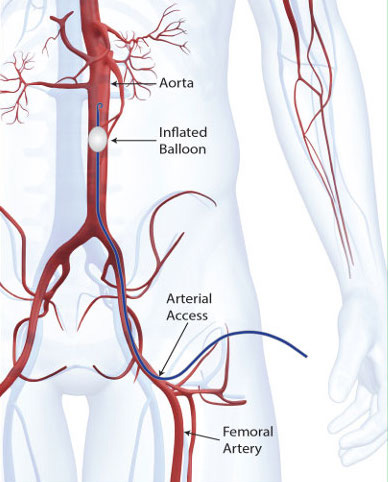A tiny balloon is about to do huge things. It’s about to buy trauma surgeons critical time to save lives.
IU Health Methodist Hospital’s trauma team – inside its Level I trauma center – is in the midst of training on a groundbreaking technique to save patients who are rapidly bleeding to death.
 Patients brought in severely bleeding from injuries to their chest, abdomen or pelvis will undergo a quick procedure that will stop the bleeding and allow them to be taken into surgery.
Patients brought in severely bleeding from injuries to their chest, abdomen or pelvis will undergo a quick procedure that will stop the bleeding and allow them to be taken into surgery.
The way it works:
This is an endovascular technique, where a tiny puncture is made in the groin and a little wire – a flexible catheter – is placed in the femoral artery.
That catheter is then maneuvered up toward the aorta. At the upper tip of the catheter, a tiny balloon inflates.
That balloon will, essentially, stop any blood flow beyond the balloon. It is a temporary fix used only for the most serious of trauma injuries.
“It buys us that time so they stop bleeding for that 15 or 20 minutes,” says Methodist trauma surgeon Jennifer Hartwell, M.D. “So, we can get them upstairs and get them to the operating room and do what we need to do.”
The trauma team is going through training now. It expects to start using the procedure — officially called REBOA (resuscitative endovascular balloon occlusion of the aorta) — by the end of the year
Image provided by Pryor Medical Devices, Inc.
— By Dana Benbow, Senior Journalist at IU Health.
Reach Benbow via email dbenbow@iuhealth.org or on Twitter @danabenbow.
